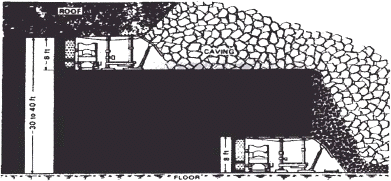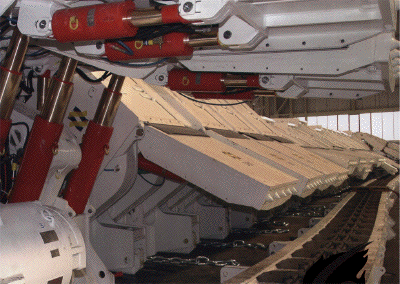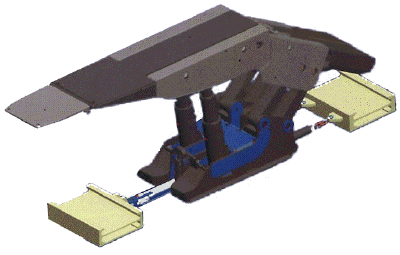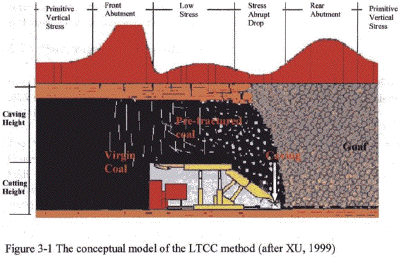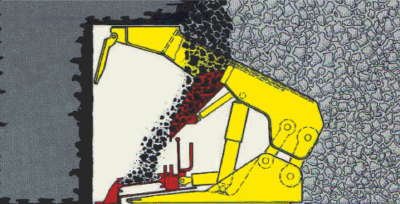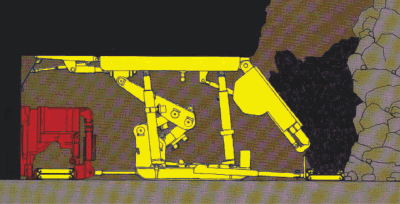TOP CAVING
Overview 0 CommentLongwall Topcoal Caving (TCC) is a method of extraction for underground mining of thick seams. It uses a longwall set-up and natural forces to aid in the winning of coal. With this method of extraction only a single longwall is developed at the foot of the seam. The control of the roof layers at the face is by means of powered supports. At the face, the coal is mined with a Shearer at a set height, and transported out of the mine using an armoured face conveyor (AFC). According to the rate of advance, the upper coal section of the seam is then induced to cave at the goaf side and is removed by a second AFC, which is situated behind the face supports.
The space behind the rear legs of the powered supports is large enough to allow lateral and vertical movements o the goaf shield for control of caving. At the beginning of the operation of the TCC (i.e., at the end of the machine pass) when the face conveyor and supports are advanced, the rear conveyor is still protected by the goaf shields. The goaf shields are then retracted to direct the drawing off of the caving coal onto the rear conveyor. Controlled drawing contributes decisively towards a highly satisfactory rate of recovery. The canopies should be provided with openings in case caving has to be initiated by shot firing.
In order to use the TCC method successfully, the coal should part readily from the roof. In cases of sticky coal, TCC in two lifts should be applied. First, a longwall face is developed at the horizon of the seam. After that, a second longwall face is developed at the floor horizon of the seam, and the coal remaining between the two faces is recovered by caving. Thick seams can be almost completely extracted using this method.
Another variation of the TCC use, where the seam thickness is over 15m and the flow and parting characteristics of the coal are suitable, is “The Velenje Vertical Concentration” method (Ahcan 1979).
Two longwall faces are again developed. The top slice is placed so that there is 5m of coal left above the supports. This top slice is advanced as an ordinary longwall operation, leaving 5m of coal overhead. The overhead coal is allowed to cave with the roof and so, is preliminarily broken. A second longwall face is then started off (6 – 12 months later) at the foot of the seam, using the basic TCC system. Between the upper and lower galleries is a septum perhaps 5m deep. Due to the caving of the coal from the septum and the previously broken overhand coal, rapid winning of coal is made possible in the lower gallery using this method, and where conditions allow, the mining losses are also reduced. Because of the rapid evacuation of the broken coal from the overhand part of the seam, Achan (1979) reports that output man shift reached the high value of 90-100 tonnes per man shift.
The viability of these methods depends greatly on the flow characteristics of the caving coal. If it tends to large blocky fractures, it is unlikely the method will be successful. The major advantages of these methods are the possibility of a very low cost per tonne of Run of mine coal, high productivity and a high percentage of recovery.
